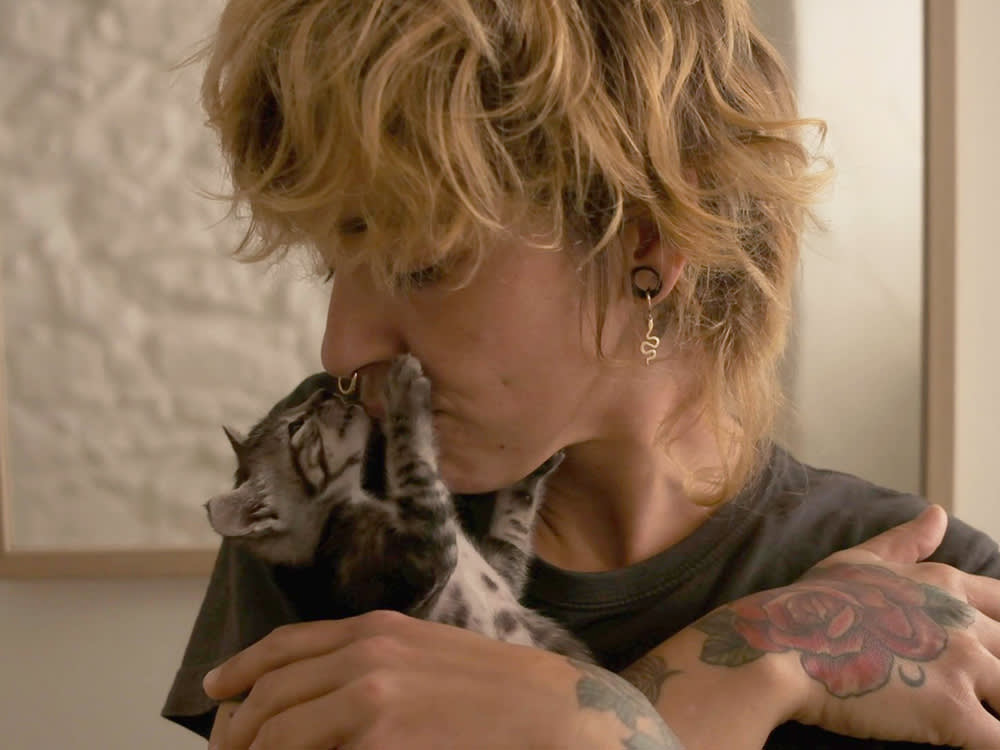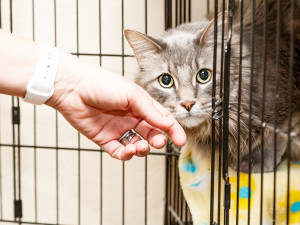A Step-by-Step Guide to Adopting a Cat
From where to begin looking to what the adoption process entails to how to prepare your home for your new pet.

Share Article
Adopting a cat, especially if they’re your first, can feel like a terrifying jump into an ocean of the unknown. How do you adopt a cat?opens in new tab How do I choose a cat? What do I need to have at home? What does the application process look like? What if they hate me? As overwhelming as these questions can feel, most of them can be dealt with by taking a deep breath, doing some prep, and working your way through our step-by-step breakdown of the whole process.
Establish what sort of cat are you able to adopt.
Quite possibly the most important part of the whole process is establishing what sort of cat you want, and are able to, adopt. Are you looking for a young kitten? A fully grown cat? A senior? Are you able to adopt a cat with special needs who otherwise might not find a home? Are you able to adopt more than one cat at a time? Many are bonded with another cat, and even if not, will be far happier living in a situation with another cat.
Don’t set your heart on getting a specific breed or coloration of cat — you never know who you’re going to meet at a shelter and fall in love with!
Browse local listings.
Nose around for what cats and kittens are available in your neck of the woods. Adopt-a-Petopens in new tab lets you search through tens of thousands of listings around the country and allows you to specify by breed, age, sex, and color — plus, if you don’t see the perfect match right away, you can set up an alert to let you know as soon as one matching your parameters is listed. Adopt-a-Pet works with shelters, rescues, and private individuals looking to find homes for cats — but also spend some time searching for local rescue and adoption organizations on the off chance they’re not listed on Adopt-a-Pet.
How much do you spend on your pet per year?

Arrange a visit.
Unfortunately, Covid has meant that many places can no longer allow you to just show up at their door at spend time with all the animals looking for a perfect match — but with a bit of foresight, you can still drown in a pile of kittens. Many rescue organizations and cat cafés allow you to book a time to meet their adoptable cats to find out how well they mesh with you. For as cute as a kitten seems on an online listing, sometimes it’s just not the same in person — and you might fall in love with a critter that you never expected.
Fill out all the paperwork.
Every adoption organization has its own paperwork requirements, so before you can take the pet home you’ll need to fill it in and file it. These can vary hugely in how long and intensive they are. They’ll often ask questions about you and your household — the ages of people there, if there are any other pets, does anyone smoke, etc. Some may ask you what you’re looking for in a pet, and others may ask you to describe what sort of space you have set up for the animal (see more on that below). Most will require you to agree to registering your pet’s microchips, keeping up their medical care, and more. All of this is with the aim of making sure that the cat goes to a suitable and loving home that can meet all of their needs.
Buy important supplies.
Once you know for sure you’re going down the pet adoption road, make sure to stock up on all the important items you need to have at home before your cat moves in. You’ll need cat litter and a litter box — one sized for the age of your cat. A kitten will need a small litter box with low edges to climb in and out of (you can often buy disposable ones for this first stage of life), and as cats get old and can’t jump as well, you’ll want an easy entry point into the litter box. For adult cats, the rule of thumb is that a litter box should be 1.5x as long as the pet themself.
Beyond litter and a litter box, you’ll need food (again, as appropriate for the age of your potential pet), enrichment toys, a scratcher, treats, a brush, nail clippers, and somewhere comfy for them to cuddle up — though many of those can come with time.
Set aside a safe, dedicated space for your pet.
When you first introduce a cat to your home, chances are they’ll be anxious and scared. The best first step to making sure they’re happy is to give them a dedicated small space they can make their own and feel safe — ideally a small bathroom or guest room, if you have the space. You can put their basic supplies in there and try leaving some dirty clothes of yours in the room too, so they can get used to your scent. This gives them a place where they can explore and feel safe until they’re ready for the rest of your home — keep your eye out for a probing paw being stuck under a door as a sign that they want to see more.
Do a safety check around the house.
If you’ve never had a cat before, you might not be thinking of what things around the house are potentially dangerous to a new pet. While people may not think of cats as chewers the way that dogs are, they’re still pretty handy at nomming on plants and power cables. For the former, double check that your houseplants are cat safe — the ASPCA maintains a really great tool for finding this outopens in new tab. Some are so dangerous that even having them in the same rooms as your cat can be risky, and others might only slightly irritate their mouth if they chew on the leaves directly, so read up on what the risks are.
Cats are also especially at danger in the presence of essential oils, so be extremely careful using any of those anywhere a pet might end up.
Look around for potential places your future cat could hide or escape through. Dilara Göksel Parry, Certified Cat Behavior Consultant at Feline Mindsopens in new tab and Cat Town Oakland’s Program Manageropens in new tab reminded us that cats can get through window screens. She recommends looking around your space from a cat’s point of view: “I tell people to look at their home from a cat’s perspective, low and high, to see where cats can get into that you haven’t thought about. That’s partially because they go hide in these places when they're scared, often in the first days after adoption, and then the adopters can’t find them. They think that they've gotten out somehow — but they go behind your washer/dryer.”
Arrange any follow-up requirements.
Once you’re okayed for the adoption, you may need to plan some future requirements for your new pet. Chances are they’ll be microchipped, so you’ll need to register your cat ownership with one of the many microchip registriesopens in new tab. Depending on your location, you may also be required to register your ownership (and potentially pay a pet license) with your city or county. You’ll want to schedule a first vet visit in the not too distant future, and the adoption agency themselves may want to organize a follow-up in a few months, just to see how things are going.
Bring your pet home!
Whew, you did it! You got all of the pieces together, got approved, and now you’re bringing a tiny fuzzy gremlin into your house who you’re going to love to pieces. If you’ve followed these instructions, you should be more than ready, even if they do decide that their favorite activity is biting your big toe as hard as they can with their tiny razor kitten teeth.

Tim Barribeau
Tim Barribeau is a freelance writer, editor, cat dad, and “help your boyfriend buy a suit that actually fits for once” consultant. He was previously the Style and Pets editor at Wirecutter, and has bylines at a bunch of publications that don't exist anymore (and a couple that still do).
Related articles
![Cat sitting on a kitchen chair, looking at the camera]()
How to Cat-Proof Your House
Ten steps for keeping your cat out of trouble.
![Kitten sitting on a blanket]()
7 Steps to Keep Your New Kitten Happy and Healthy
With great cuteness comes great responsibility. A vet breaks down everything you need to know when you bring home a new kitten.
![A hand reaching towards a cat peaking out of a cage.]()
10 Questions to Ask a Shelter About an Adoptable Cat
From medical history to adoption fees to litter preferences, here is everything you need to know.
![Cat sitting in a teal litter box]()
How to Train a Cat to Use a Litter Box
If you do nothing else, teach your cat to poop in their litter box (not your shoe).




